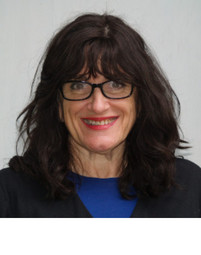How to be a Culturally Competent Educator
Imagine walking into Ms. Prabhu’s third-grade classroom. Student projects about family traditions and community life cover one wall – from photo essays about weekend gatherings to stories about family heritage to artwork representing meaningful celebrations. The reading corner features books that reflect the rich variety of student experiences and backgrounds. This is cultural competency in action – creating a learning environment where every student can engage and succeed.
Educational research consistently shows that culturally competent teaching leads to improved academic outcomes and increased student engagement. Studies in educational psychology have found that when teachers develop cultural competency skills, students demonstrate higher rates of participation and stronger connections to their school community.
Ready to develop these essential skills? Our Cultural Competency and Responsive Teaching course can help you start your journey.
Building Trust Through Understanding
Research in multicultural education demonstrates that cultural competency goes far beyond surface-level celebrations. As Mr. Santos, a middle school teacher. “Now I know it’s about creating daily connections that help every student thrive.”
Express Genuine Interest
When Jamal shared stories during morning circle, his teacher’s thoughtful questions and attentive presence showed she valued his experiences. Simple actions build strong connections:
- Practice active, respectful listening
- Acknowledge and validate student sharing
- Show authentic curiosity about students’ lives
- Demonstrate attention through mindful presence
Share Authentically
Mrs. Delgado transformed her classroom dynamics by sharing her own experience learning mathematics through multiple approaches. While maintaining professional boundaries, consider sharing:
- Learning experiences that required persistence
- Times you’ve gained new perspectives
- Moments of growth and understanding
- Stories that connect to classroom concepts
Creating Engaging Learning Spaces
Deepen your understanding of these approaches through our Cultural Competency and Reflective Teaching course. For additional strategies in making learning accessible to all students, explore our Accommodations through UDL course.
Embrace Storytelling
Educational researchers have long recognized the power of narrative in building student connections. Supporting this research, a high school history teacher enriched her curriculum by inviting students to share their diverse perspectives and experiences. Stories can:
- Connect curriculum to real-world experiences
- Showcase different ways of problem-solving
- Build understanding across experiences
- Create meaningful learning connections
- Validate various forms of knowledge
Make Learning Fun and Inclusive
In Ms. Kim’s class, science comes alive through real-world applications that reflect students’ diverse experiences and interests. Create engagement through:
- Projects that welcome multiple approaches
- Creative activities celebrating diverse thinking styles
- Collaborative work that values different strengths
- Learning experiences that incorporate student interests
Providing Responsive Feedback
Studies in educational assessment highlight the critical role of culturally aware feedback in student success. The way we give feedback shapes how students see themselves as learners. Effective feedback should:
Be Delivered with Care
- Use supportive, encouraging language
- Choose appropriate moments for sharing
- Provide specific paths for growth
- Consider individual learning styles
- Account for different communication preferences
Stay Focused and Clear
- Address the work, not assumptions
- Use clear, direct language
- Maintain regular communication
- Document progress meaningfully
- Adapt approaches based on student response
Measuring Success
Track your growth as a culturally competent educator by:
- Observing changes in student engagement
- Gathering input from families and students
- Reflecting on classroom interactions
- Adjusting approaches based on feedback
- Documenting successful strategies
Remember, becoming a culturally competent educator is an ongoing journey of learning and growth. Each step toward understanding helps create a more inclusive learning environment where all students can succeed.
“The most meaningful moments,” reflects veteran teacher Ms. Nguyen, “come when students feel confident bringing their whole selves to their learning. That’s when you know you’re creating true inclusion.”
Deepen your understanding of cultural competency through our comprehensive professional development courses.
2025 Editor’s Note: This guide has been updated to reflect current best practices in cultural competency education. We’ve incorporated new research on inclusive teaching methods, expanded our discussion of Universal Design for Learning principles, and updated our recommendations based on the latest findings in multicultural education. The article now includes broader perspectives on family structures, learning styles, and cultural expression while maintaining its focus on building meaningful connections in any learning environment.

About the Author
Ellen Paxton is a respected expert in education and best known as the Chief Learning Officer of Professional Learning Board. As a two-time National Board Certified Teacher, Ellen has successfully published and customized online professional development courses and Learning Management Systems for 20 years to help teachers meet their state continuing education renewal credit requirements. Through ProfessionalLearningBoard.com, RenewaTeachingLicense.com, and ConnectedPD.com. Ellen has established solutions and maintained partnerships with several accredited universities, higher education institutions, teachers’ unions and state Departments of Education while setting strategic direction that makes a difference and overseeing implementation of popular online PD.

Comments are closed.